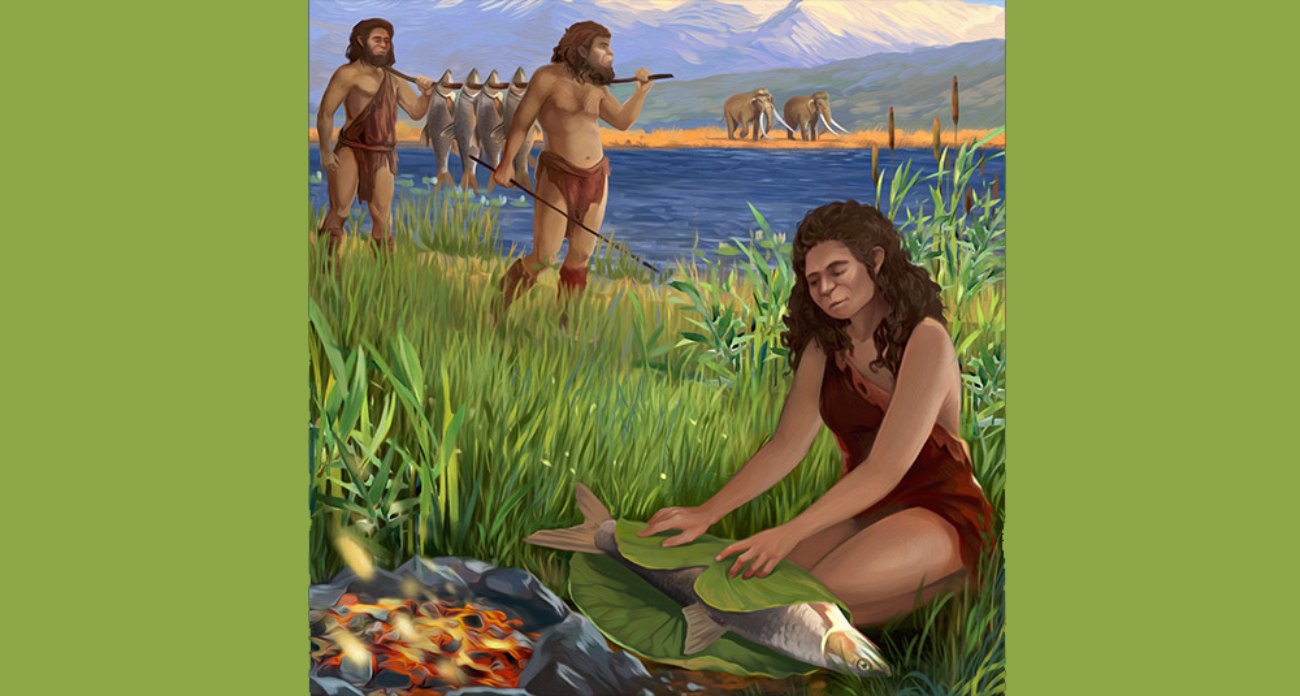Islands are home to unique flora, fauna, and people. They often differ greatly in size from their mainland relatives. In the same way that there used to be baby mammoths on Crete (Greece), there also used to be enormous birds in New Zealand. The existence of cases of island dwarfism and island gigantism continues to this day. Whence do they then emerge, though? Dwarfism has been studied on islands for generations. But why do so many island creatures seem to be abnormally small? Is it possible that this phenomenon may happen to people as well? Perhaps it has happened before. And what about the inverse phenomenon—island gigantism?
Island dwarfism: The lands where only dwarfs live
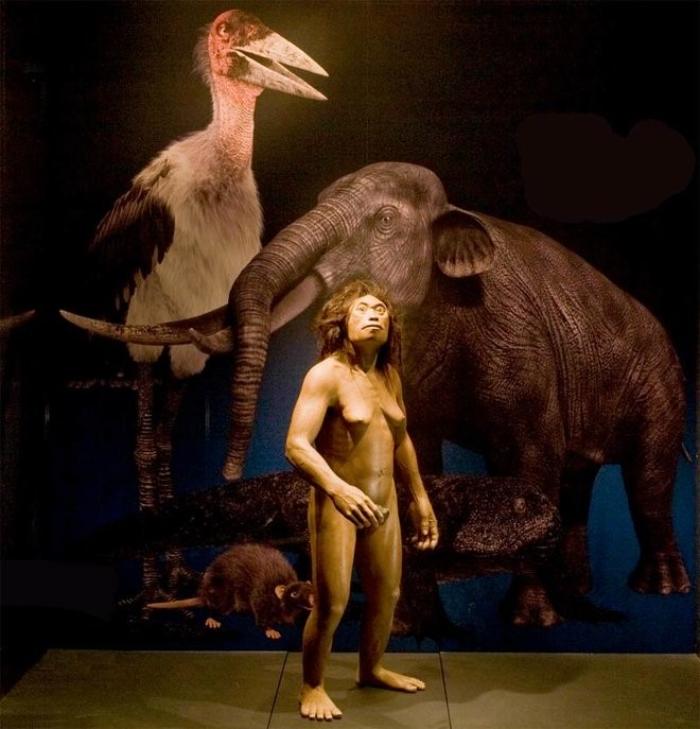
Any number of animals in the wild may become isolated from the rest of their species. Several of a colony of mice, for instance, may hitch a ride on a piece of wood and end up on a deserted island. When people go to uncharted territory, they experience different weather and other environmental factors. They now face new difficulties in their altered environment. To assure their continued existence, they will need to make some adjustments.
This may cause the island to be colonized by a new population that, over time, evolves into something radically different from the original inhabitants. This may cause remarkable growth or shrinkage of the body, particularly in island settings which are called insular gigantism and insular dwarfism.
The world’s tiniest mammoth
Fossils from the Ice Age are only one source that exemplifies this phenomenon of insular dwarfing. As such, they provide evidence that many extinct dwarf elephant species previously called the islands of the Mediterranean home, including Sicily and Malta. Some islands even have smaller, dwarf mammoths. The Cretan mammoth Mammuthus creticus, at just 1.13 meters in height, was the smallest of its kind anywhere on the globe. Dwarf mammoth bones have been found in Sardinia.
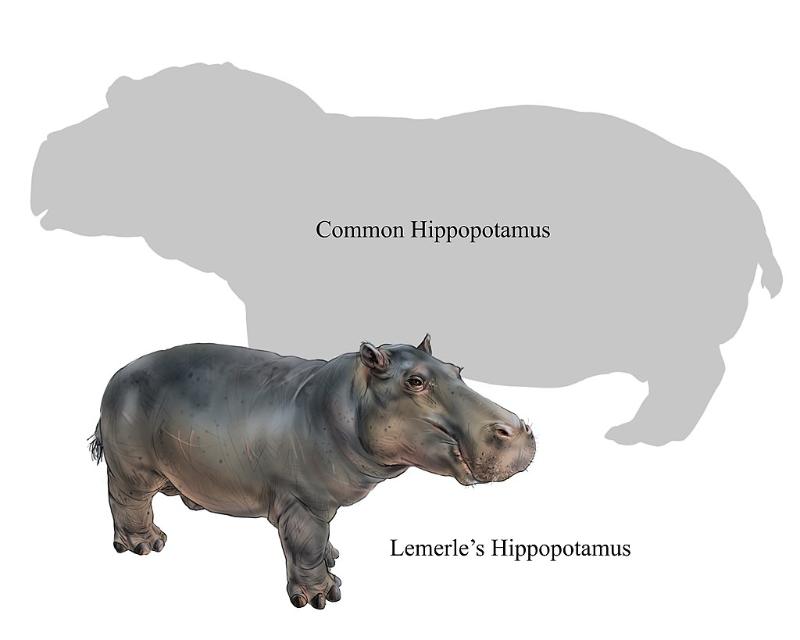
Approximately 1,500 years ago, Madagascar was home to three dwarf species of hippopotamuses (Hippopotamus madagascariensis) that are now extinct. The biggest specimens were 6.5 ft (2 m) in length and 2.5 ft (0.7 m) in height instead of 16.5 ft (5 m) in length and 5.3 ft (1.6 m) in height of today’s species. The Honshu wolf of Japan, like many extinct wolf species, was much smaller than modern wolves. They were the smallest subspecies of the grey wolf in the world, 30 cm in height and 88 cm in length.
Dwarfing still exists today
However, island dwarfism, also known as insular dwarfism, is not a thing of the past. Raccoons, rabbits, pigs, and even deer all display this trait even now. With a few notable exceptions, even snakes tend to be smaller on islands. Even the so-called Svalbard reindeer of Norway’s Spitsbergen are noticeably smaller than their mainland counterparts. They stand at a meager 65 centimeters at the shoulders, compared to the 110 cm that mainland reindeer do.

A shrunken subspecies of elephant still exists in the modern world. There are only approximately a thousand of these Borneo dwarf elephants left in the wild, and they can only be found in the far northeast of the Indonesian island of Borneo. Male Asian elephants may grow to be as tall as three meters at the shoulders, whereas this species only reaches a height of two.
DNA samples from these elephants have lately been analyzed by scientists looking into their lineage. According to genetic studies, it has been around 300,000 years since Bornean elephants interacted with any other species or subspecies of elephants. The elephants probably traveled to Borneo through an existing overland route.
For whatever reason, animals that grow quite large on the mainland prefer to colonize islands, where dwarfism is the norm from one generation to the next.
Possible causes of dwarfing
But why do island animals tend to be smaller in size? When observing animals, a tiny size in a single specimen usually indicates a genetic flaw or starvation. However, additional variables are at play in the instance of island dwarfism, causing whole population to be of smaller stature.
Food accessibility is a main factor in insular dwarfism. Competition for scarce resources like food and shelter is certain to flare up the island’s animal population. Predators are just as guilty of this as herbivores. Because of their reliance on prey, they are often the first to become extinct when that resource becomes rare. Those who learn to make do with less have a leg up. As a result, island predators tend to be smaller than their mainland counterparts.
The same is true, for the most part, on islands for herbivores. Since there are no longer any predators to worry about, it turns out that having a large body size for defense is no longer evolutionary beneficial since it requires too much energy. However, because of the scarce food and water, being tiny becomes an evolutionary adaptation. A smaller body needs fewer calories to keep its metabolism steady. These reproductive benefits for survival are most prominent on the islands.
Survival of the fittest
Selection pressure describes this environmental bias toward certain features in evolutionary theory. By living and reproducing at a higher rate than their conspecifics, people with advantageous qualities increase the likelihood that those traits will be passed on to future generations. Species of huge animals that need a lot of energy are especially vulnerable to the selective pressure that leads to island dwarfism.
An elephant that develops dwarfism as a result of a mutation may do well in an isolated environment. Elephants that can get by on less food or food with a lower energy density may have a better chance of survival if the island only has poor soil and few plant foods instead of extensive grassy fields like on the mainland. This elephant has the ability to have additional children and pass on the mutation to them.
Dwarfism’s genetic information is more likely to spread since islands are often home to just a few members of a given species. So, the unique environment and, most importantly, the scarcity of food on the island encourage the development of dwarfism among the local individuals.
Island gigantism: The advantage of just sheer size

Scientists have seen both the phenomenon of insular gigantism and insular dwarfism as a survival strategy on islands. But what are the reasons for wanting to bulk up? If so, what kind of creatures are impacted by this gigantism phenomenon?
When isolated from the mainland, certain rodents, especially those that are generally rather small, may grow to unusually huge sizes. Iguanas, geckos, and monitor lizards, like the Komodo dragon, also tend to grow to enormous sizes. This phenomenon, however, is not a new occurrence.
Giant fossils
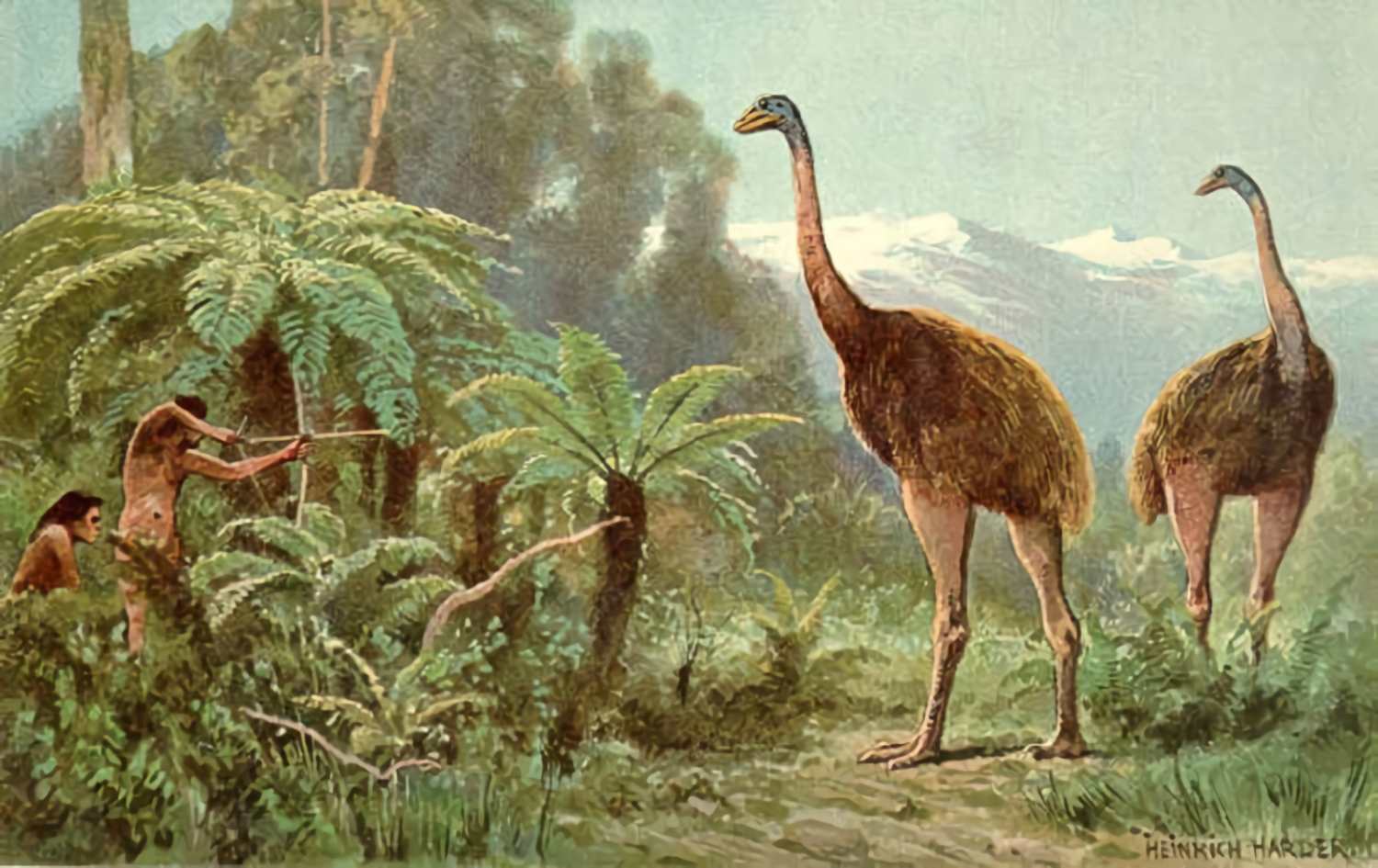
The history of giants who lived on islands is extensive. The Moa, a flightless bird that formerly measured over 2.5 meters in length but is now extinct, is an excellent example for gigantism. The earliest people arrived in New Zealand in 1280 B.C. and started hunting the huge, flightless moas, driving them to extinction.
Researchers in New Zealand have uncovered further giant examples of these birds in 2019. The fossil of a penguin that was the size of a tiny person has been found among Moas. This ancient bird is among the world’s biggest and most ancient penguins. At 1.60 meters in length, it was at least 40 cm longer than the tallest penguins alive today.
The fossil of the one and only enormous parrot that ever lived is another. The one-meter-tall bird, which lived about 16–19 million years ago, was almost twice as heavy as the biggest surviving parrot. The enormous parrot probably killed and consumed other birds because of its formidable beak.
The largest of their genus
Studies of island-based gigantism continue to this day, and sometimes with good reason: on Gough Island in the South Atlantic, mice have grown so huge that they assault the albatross chicks that live there. Seabirds on Gough have no natural defenses against animals or even quadrupeds, according to Chris Jones of the British bird conservation group RSPB.
The causes of the gigantic mouse size were investigated by biologists. It has been discovered that the genomes of big mice and mainland mice vary on 67 gene loci. This means that in small populations, the size increase is passed on quickly. However, why do individuals of such a large stature tend to prevail so well?
Small rodents, like mice, often fare better when they have many possible points of egress in the event of an attack. However, scientist Lawrence Heaney previously articulated in 1978 that the urge to maintain small body sizes reduces for many species in the absence of specialist predators, which is typically the situation on islands.
The advantage of getting bigger

There may be a number of causes for gigantism. To begin with, the creatures can’t grow without favorable environmental conditions, enough water, and enough food. It’s also possible that the existence of predators of comparable size plays a role in insular gigantism. Those that wish to be successful in their region versus predators of the same size will profit from increasing their body size. Females may want to mate with the largest available male since it increases the likelihood of producing healthy, strong offspring. Biologists call this “sexual selection,” or the process of choosing mates via sexual encounters.
Another proposed cause of gigantism is selection, as shown in the Anaho Island iguana population. According to studies conducted by the University of Nevada, male iguanas engage in territorial competition similar to that of predatory cats. A male’s ability to successfully protect his territory depends on his size and aggression. Iguanas cannot freely distribute on islands, so huge lizards have an advantage in this environment.
As a result of these and other considerations, it is clear that the species best suited to the unique habitat of islands are those who exhibit either dwarfism or gigantism.
Can humans also be affected by insular dwarfism?
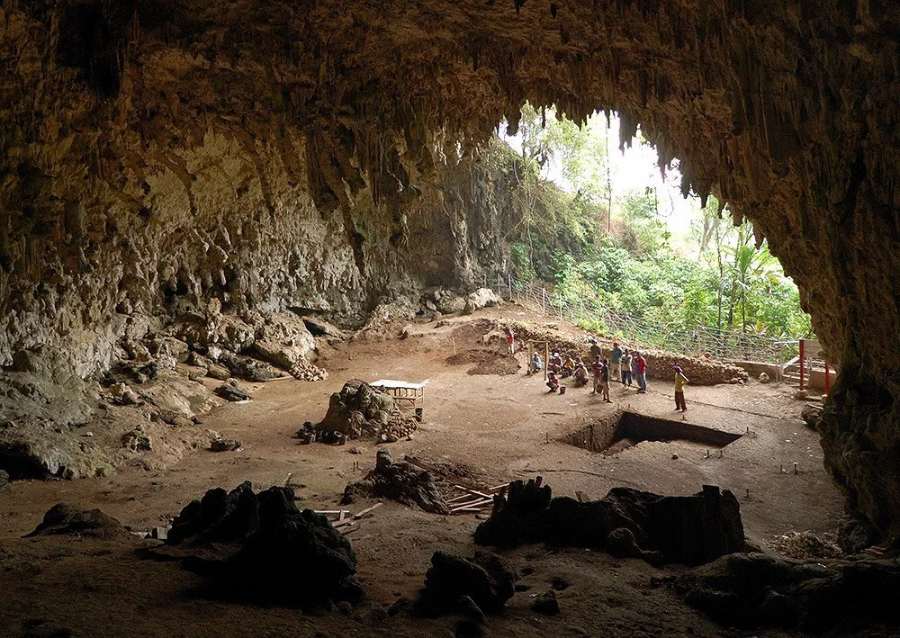
“Hobbit Man”
In the animal world, dwarfism has an evolutionary benefit due to the limited food supply on islands. Because, you know, being little helps you save resources. But is human adaptability like this possible? Our ancestors lived on little islands, as shown by fossils discovered here. They have been called into question as to whether or not they should be considered their own species.
During excavations in the Liang Bua cave on the Indonesian island of Flores in 2003, fossils dating back around 18,000 years were found, suggesting the presence of a very small-bodied early dwarf human. The discovery concerned a female roughly a meter tall with a chimpanzee’s-sized brain. The newly discovered small-statured human species was named Homo floresiensis after the Indonesian island where she was discovered.
Mystery of dwarfism
Researchers have now discovered the remains of nine other “hobbit men,” all of whom were equally short, in the same cave. Stone implements were also discovered.
Scientists have been debating where Homo floresiensis should be placed in the human evolutionary tree ever since the first fossils were discovered. Are they just deformed examples of our own species, Homo sapiens? Alternatively, did the “hobbit men” really reflect a prehistoric human species that has since gone the way of the dodo bird?
Is it a sickness or a flaw in the genes?
One of the earliest hypotheses put forth was to explain the surprising discovery of a relatively tiny human brain. In 2005, researchers compared Homo floresiensis’s brain size to that of contemporary individuals with microcephaly. People with this condition have abnormally tiny heads and never grow beyond a certain height.
Great parallels were found between the two, suggesting that Flores’ small lady may have had microcephaly. It is puzzling, however, to speculate on the origin of the stone implements that were discovered. Due to the fact that anyone with microcephaly would be unable to construct or utilize such implements.
This was always suspected, but anatomical studies conducted by Robert Martin of the Field Museum in Chicago and his colleagues proved it. There are more than 400 distinct types of microcephaly in contemporary humans, and their research indicates that many of these characteristics are present in the bones. In a small population, this genetic flaw is handed down quickly through the generations. There is not enough evidence at this time to attribute the most extreme cases of low height to a particular condition. So, this theory is still only a guess at this point. There is no scientific proof since no DNA samples have been collected.
It wasn’t until 2008 that a brand-new theory emerged: Dwarfism on Flores may have been caused by a genetic mutation. Small stature and fragile bones were the results of this genetic flaw.
A small caveman
Researchers from all around the globe tried to figure out why Homo floresiensis was so short. New human fossils discovered in Mata Menge, roughly 70 kilometers east of the location where the “hobbit men” were unearthed, have shed some light on the mystery. Some six teeth and a piece of a lower jaw were discovered by paleontologists in a limestone cave, all of which belonged to an early human.
These fossils are undeniably hominin and remarkably similar to those of Homo floresiensis. Although the artifacts share many characteristics with Homo erectus, a modern human predecessor, and Homo floresiensis, they are up to 20% smaller than the hobbit men.
People that populated Flores about 700,000 years ago may be responsible for the recent discoveries. They had the same dwarf stature as Homo floresiensis and, at least in terms of dental features, also resembled the much bigger Homo erectus. Therefore, they could be an intermediate step in the development of the mysterious “hobbit men.” However, further skull and skeletal components of this human form would need to be discovered to provide conclusive evidence.
Ancestral mystery
But the new fossils may lend credence to the idea that Homo floresiensis originally evolved from Homo erectus. This notion is supported by similarities with Homo erectus artifacts discovered in the area. Although other characteristics also point to the specimen possibly being a tiny example of an early human species, the small brain of Homo floresiensis stands out. Since Homo erectus only had a short period of time in which to develop their brain. It was about the same size as a chimpanzee today.
What’s more, we know that Homo erectus persisted in Indonesia for at least another 30,000 years. Homo erectus artifacts discovered on the Indonesian island date back 1.2 million years. Speculations suggest that the existence of these pre-humans in the cave may be traced back to the discovery of stone implements. It is estimated that the tools are 1 million years old.
This suggests a potential branching pattern for the human family tree that might accommodate the Hobbit men. It’s possible that some Homo erectus survivors washed up in Flores and made a new home there. Their gradual diminution over time reflects an observed adaptation in evolutionary biology. In this way, Homo erectus evolved into Homo floresiensis. However, it’s not clear whether this data is adequate to establish where this species originated. No examples of such fast growth in size in primates have been found.
Lineage of the dwarf humans: Who was Homo floresiensis?
Where did the Flores “hobbit people” originate from? This topic has yielded conflicting findings so far. For instance, the year 2017 saw the introduction of a novel theory. That would imply that Homo floresiensis didn’t necessarily come from Homo erectus. The “Hobbit” bones have been studied by scientists from the Australian National University, who have compared the remains to those of other early and prehuman species.
It seems unlikely that Homo erectus was the progenitor of Homo floresiensis. This is due to the fact that Homo erectus had a much more sophisticated jaw structure than Homo floresiensis. This theory posits an African origin for the first humans, who were notably shorter than modern humans. Comparisons indicate that Homo floresiensis is closely linked to Homo habilis.
Nearly 2 million years ago, Homo habilis appeared in Africa, predating even Homo erectus by a small margin. Based on the data, it seems that Homo floresiensis and Homo habilis are closely related. The two species shared a common ancestor 1.75 million years ago. The “hobbit” lineage could have diverged from this evolutionary tree long before Homo habilis existed.
An evolutionary phenomenon
Contrary to this theory, however, it seems that neither the ancestors of Homo habilis nor Homo habilis itself ever left Africa. As fossils show, only Homo erectus and his contemporaries made it to Asia.
It is, therefore, more than a mystery how Homo floresiensis or its predecessors arrived in Indonesia. Homo floresiensis may have originated in Africa and then spread over the world. However, it’s also possible that the hobbit ancestor didn’t become a race until after they departed Africa. The second hypothesis proposes that Homo floresiensis’ diminutive size was associated with the spartan conditions of their island home.
Human dwarfs
This “island life” idea has additional supporting evidence. The evolutionary history of organisms in a closed and isolating environment, such as an island, can be significantly altered. As is still common in the animal realm today, scientists wondered whether the discovery may be a deformed human. The modern-day inhabitants of the area are still notably small.
The Flores pygmies are a group of individuals who are still alive and well today and whose genome has been studied. Comparing the genomes of Flores pygmies with those of people living on bigger islands like New Guinea or the Asian mainland revealed that there are differences in some locations. These genes, which are involved in regulating short stature among other things, have seen greater variation through time than the rest of the human population.
This provides genetic proof for the island theory. The Flores Hobbit was apparently distinct from its family due to the island’s climate, yet it was likely not an entirely new species. The origins of the hobbit people continue to be shrouded in obscurity, since it is unclear when or whether the island of Flores was ever colonized or if it was ever linked to the mainland.





